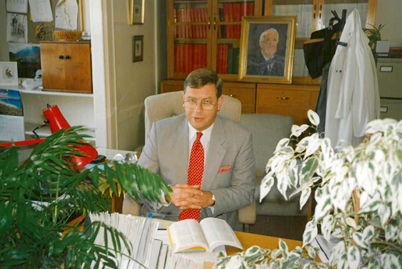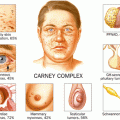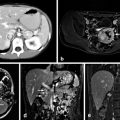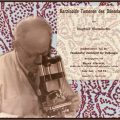Professor John Richard Farndon
John Richard Farndon’s parents were married in 1939 and lived in a rented back-to-back flat in the Tinsley area of Sheffield. This home was destroyed in the blitz of December 1940 and as a consequence they went to live with their parents. John was born on 16 February 1946 and his younger brother was born in 1949. Once the children were born, they moved to a large council estate between Sheffield and Rotherham. This was not far from the Orgreave coking works, which was the site of significant conflict during the miners’ strike in 1984. In the 1950s and 1960s in this part of South Yorkshire, coal mining and the steel industry dominated most working lives. Life was very different during their childhood in the 1950s than it is today. There were no cars, telephones, fridges, washing machines, tumble dryers, double glazing, or central heating. The toilets were outside, socks were darned, the baths between the boys were shared and most people in the county supported either Sheffield United or Sheffield Wednesday football teams. Smoking amongst the community was almost endemic and all the men drank either mild or bitter beer. John’s reflections of his childhood are that it was a happy time and although circumstances were modest, everybody in the community lived in similar homes and shared a common lifestyle. There was no feeling within the Farndon family that they were underprivileged or deprived. The concept of going to university seemed foreign and it was felt that this would not play a part in the children’s lives. For holidays, the family usually went on trips to the east coast of England, favourite destinations being Scarborough and Bridlington. One year, Riley’s, the local coach operator, took the family to Great Yarmouth and this was considered a really adventurous trip! John’s brother Clive, a successful practicing lawyer in Leeds describes their childhood in the 1950s as being “just another couple of lads growing up with their mates on a council estate in South Yorkshire.” Time was passed and amusement and entertainment provided, particularly in John’s case, by constructing go-karts out of pieces of wood and old pram wheels taken from the local dump. Clive reflects that the steering mechanism had a mind of its own and that brakes were nonexistent. Despite this, he recalls the two of them used to race these carts alongside the main Sheffield to Rotherham road.
For education, the two boys attended the local junior school. This was at a time that the national exam system (called the 11+) was in place, and it was not expected that anyone from John’s estate would ever take this test and pass it. This seemed accepted by the local community; families were simply just not academic. There were no role models, icons, or anyone to inspire or stimulate. However, this mould was broken in the summer of 1957 when John passed the 11+ exam and he subsequently attended the Woodhouse Grammar School in Sheffield, a prestigious grammar school with an enviable reputation for both academic and sporting achievement. Clive comments that this must have been a difficult and challenging time for John to adjust, maintaining his connections with those he had grown up with but forging new friendships with a new academic focus in the grammar school. John worked hard, without being a swot, and in this environment his academic abilities flourished. John is remembered in the family as being someone with good humour, a self-effacing demeanour and a complete absence of pomposity, but also someone who had a strong desire to succeed from an early age. He kept these qualities during his time as a medical student and later as a doctor and consultant and his modest beginnings underline the truly remarkable achievements that he had later in life with his global reputation as a successful surgeon.
Following completion of his secondary education at Woodhouse Grammar School Sheffield, John Farndon was admitted to the University of Newcastle upon Tyne in 1964 for the medical course. During his time as a student, he undertook an intercalated degree as a Bachelor of Science in anatomy. Under the direction of Professor Joe Scothorne, Professor of Anatomy, he obtained a first-class honours degree for his dissertation entitled “An investigation of some factors controlling the growth and development of the parathyroid glands in the chick embryo”. He was a distinguished medical student during his time in Newcastle and won a number of undergraduate prizes, the most notable of which was the Philipson Scholarship, an award given for the best graduating student. He attained this at the time of his graduation in 1970 when he was also awarded second-class honours. His postgraduate training was also in the northern region of England. After a year as a demonstrator in anatomy, following his house surgical and physician posts, he was appointed to the registrar training program. He conducted a period of research in the Department of Surgery at Newcastle University between 1976 and 1977 and completed his thesis for the degree of doctorate of medicine in 1986, the thesis being entitled “Pheochromocytoma”. In January 1979, he was awarded the prestigious Peel Travelling Fellowship and International Research Fellowship in the Department of Surgery, Duke University Medical Centre, Durham, North Carolina. Here, he undertook the seminal work for which he is most remembered on medullary thyroid cancer . Working under the supervision of Dr Sam Wells, John began collecting data on families in whom medullary thyroid cancer had been diagnosed. In addition to those families where this was co-expressed with pheochromatoma and parathyroid disease (MEN II), he found some families where MTC was the sole manifestation of the inherited condition in a given kindred, recording for the first time this familial syndrome (see references [1–8] for Most Significant Publications and see also Chap. 13). In 1981, he was appointed senior lecturer in surgery at Newcastle University and honorary consultant surgeon at the Royal Victoria Infirmary, Newcastle, working under the chairmanship of Professor Ivan Johnston. His international acclaim during his early years as consultant was highlighted by an award of the James IV Travelling Scholarship in 1984 where he visited the Universities of California, Washington, Duke University, Virginia, Michigan, Chicago, Johns Hopkins, and the Memorial Sloan Kettering Hospital. The following year he was awarded the Australian College of Surgeons Travelling Fellowship and gave lectures in the Universities of Auckland, Christchurch, Sydney, and Melbourne. That same year, in 1985, he was awarded a Hunterian Professorship by the Royal College of Surgeons of England and he gave his Hunterian oration on 6 June 1986 entitled “Parathyroid Transplantation”. His reputation as an engaging and informed lecturer grew in the early 1990s during his time as a senior lecturer. He gave talks in Hong Kong, India, Ireland, Adelaide, South Africa, the UK, Malaysia, Hamburg, Athens, Gothenburg, Tokyo, and Boston all at either prestigious meetings or as personal invitations for eponymous lectures (Fig. 1). In 1988, he applied for and was appointed to the Chair of Surgery at the University of Bristol where he was head of the division of surgery and honorary consultant surgeon at the United Bristol Healthcare Trust. His publications numbered nearly 200 and the vast majority of these are in the field of endocrine surgery but also span a wide range of general surgical topics, reflecting the state of UK surgery at the time when specialization was evolving. He was editor of a number of important books, most notably the Companion to Specialist Surgical Practice volumes relating to endocrine surgery and he contributed 34 chapters in the leading textbooks of the time, largely on matters relating to endocrine surgery. Up to 2001, he had given 146 papers to learned societies, was in receipt of a further 123 invited talks and meeting chairmanships, and was increasingly recognised as the leading light in endocrine surgery in the UK and internationally. Simply to list his achievements and publications does not give sufficient recognition to the qualities of the man who we remember and respect. As a teacher and a trainer of both undergraduates and postgraduates, he was completely selfless. He would always find time to teach the medical students, was more than willing to hold retractors for surgical trainees and take them through complex operations, no matter what time of day or night and the patient was always the central focus of his attention and motivation. He supervised a large number of research projects leading to higher degrees for his trainees during his time in Newcastle and subsequently in Bristol. For many, this was the launch of their career, and several of his trainees and students have gone on to achieve major roles in the surgical and medical world, influenced and supported by his dedication and commitment. He was a kind and generous man and above all was fun to work with and be around. He had a very good sense of humour and the legendary water fights that used to occur at the end of his operating lists on a Friday evening in theatre 1 at Newcastle’s Royal Victoria Infirmary are still remembered! A measure of the respect with which he was held was the fact that he was the surgeon’s surgeon and the physician’s surgeon. His personal workload, both clinically and academically, was legendary. His reliability and his loyalty were without question. If John said he would do something, it would be done. Most notably, in his later years he undertook editorship of the British Journal of Surgery, a post of huge responsibility and workload and he personally reviewed a very significant number of the publications submitted to that journal for consideration. He was president of the British Association of Endocrine Surgeons from 1999 to 2001 and his wisdom, common sense, and leadership skills led him to be involved in a large number of interests outside of medicine and related to medicine in its broadest sense. This included being an assessor for the Commonwealth Universities Scholarship’s Commission, an international advisory board member for a number of universities, and an assessor for a number of significant grant awarding bodies. His success in academic surgery led him to being invited to review and advise on the future of academic departments in several international medical schools as well as working for the education committee of the General Medical Council. Within the wider National Health Service in the UK, he was involved in the breast screening committees at the time that this service was being set up nationally, regional and international research training committees and he was governor of one of the local schools in Bristol. As a pioneer in introducing new techniques and advancing the scholarship of surgery, he was without doubt a leading light. This included the establishment of fine needle aspiration biopsy, both in the thyroid gland and in the breast in both Newcastle and the Bristol breast units. Outside medicine, he had a long-standing interest in hockey, a sport that he continued during his undergraduate career when he was captain and vice president of the medicals hockey club and awarded full colours. He played also for the Tynedale Hockey Club and was interested in gardening, classical music, and of course he was dedicated to the support and development of his family. His untimely, tragic and unexpected sudden death in February 2002 at the very peak of his career left a huge gap not only in the world of breast and endocrine surgery nationally and internationally but also in the hearts of those who were close to him. Undoubtedly, much more was to come from this outstanding, unique, and kind man and those who were lucky enough to work with him and have learned from him remain respectful and in admiration not only for his skill and ability as an academic surgeon but also for his outstanding qualities as a human being that he displayed.










